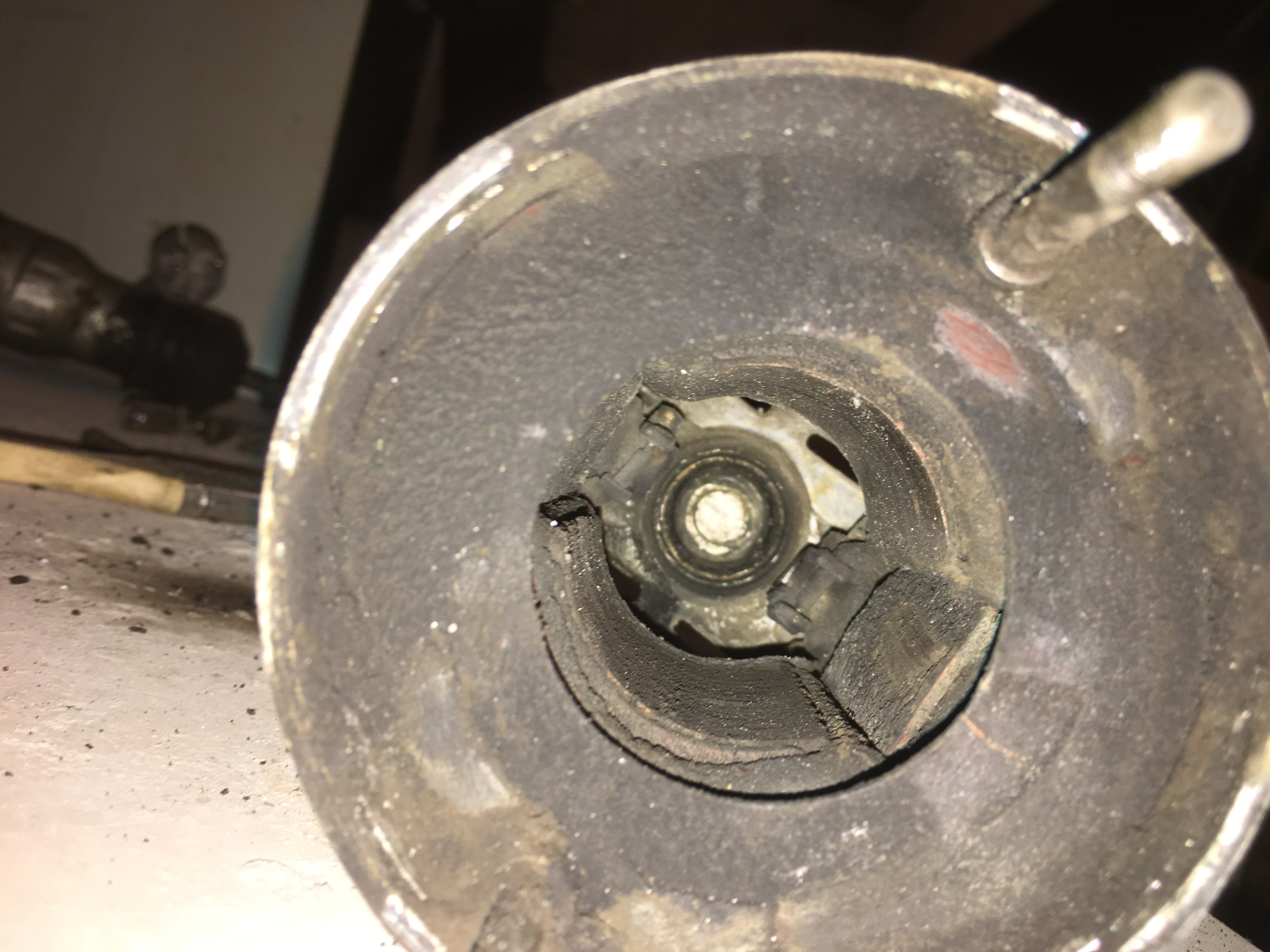Since I have very old electric drill press from unknown year (older than 90's) which still works very good actually, but its been sitting in dust for more than 2 decades, soo the internal where stator is soo in dark grease but sadly i cannot reach it since I dont know how to disassemble the stator...
(Similar to this
View: https://www.youtube.com/watch?v=qCegko38Gm8
)
TL;DR can i?
A few comments, by somebody who uses old woodworking and metalworking equipment on a near-daily basis.
1. If your unit looks similar to the unit in the video you posted, it is a handheld drill, not a drill press. A drill press is a very different and far larger machine using a very different type of motor (induction motor vs. universal motor.) Below is a picture of a nice older drill press:
2. The drill in the video looks to be made in the 1950s or 1960s, it was made much earlier than the 1990s. The motor in the drill in the video used varnished insulation on the field windings and thermoplastic insulation on the cord wires, which appear to be original and would date the drill to after WWII. The case design and construction would date it to before about 1970.
4. The picture you posted appears to be the end bell of a handheld drill and shows the brushes of a universal motor. The brushes contact the commutator on the rotor and have nothing to do with the stator (field windings.) The stator is the device that the guy in the video knocks out of the casing of his drill at about 1:30 and then reinstalls at 8 minutes in.
5. I would use a few shots of brake parts cleaner or carburetor cleaner to degrease this part. Gasoline would work but is much smellier and not nearly as effective as brake parts cleaner, it is highly flammable, and takes longer to evaporate. I do not recommend using gasoline for anything except for a fuel as there are much better solvents out there to use as solvents. Brake parts cleaner is much better, even the nonchlorinated stuff that they can sell in California and the Northeast (which is about 50% xylene or toluene and 50% methanol) still works very well, so does the original tetrachloroethylene version we can buy in flyover country.
6. WD-40 is primarily Stoddard solvent and other light petroleum distillates, so it will work somewhat as a degreaser (again, not as good as an actual degreaser like brake parts cleaner), and is in fact quite flammable.
7. Do not spray brake parts cleaner or carb cleaner on anything plastic/plasticy/synthetic. Spraying it on the actual stator of your motor will dissolve the winding insulation and ruin the motor. It will also remove any and all paint it gets into contact with.



